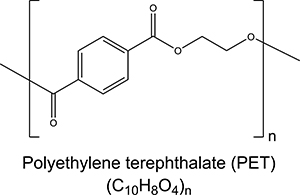aPET is suitable for flat or cold bending applications, in particular in the visual communications sector and protective screens, including visors.
PETg is chosen for applications that require printing and/or thermoforming such as Point of Sale (POS) displays, signage, and product packaging, as well as glazing applications.
Brett Martin’s Marpet range includes aPET and PETg flat sheet for sign and display, fabrication and glazing.
PET
was developed by a number of American and British scientists. In 1926, American
scientist Wallace Carothers first discovered that alcohols and carboxyl acids
could be mixed to create synthetic fibres. Unfortunately, his work on polyester
was temporarily shelved to focus on nylon. In 1939, British scientists John
Winfield and James Dickson continued where Carothers had left off. By 1941,
they patented polyethylene terephthalate (PET or PETE), which would form the
basis for synthetic fibres.
PETg was first patented in 1949. However, it was not commercially produced until 1977.
 PET is made from the polymerisation of terephthalic acid and ethylene glycol. It has the chemical formula (C10H8O4)n.
PET is made from the polymerisation of terephthalic acid and ethylene glycol. It has the chemical formula (C10H8O4)n.
Amorphous polyethylene terephthalate (aPET) contains the same polyester makeup as PET.
Polyethylene terephthalate glycol-modified (PETg) is created by adding the glycol modifier cyclohexanedimethanol (CHDM) to standard PET during the polymerisation stage to inhibit hazing and crystallisation, a risk for both PET and aPET during processing and secondary processing.
The polymerisation of PET is achieved through a condensation reaction. The resulting spaghetti-like strands of PET are extruded, quickly cooled, and cut into small pellets. The resin pellets are then heated to a molten liquid, by manufacturers such as Brett Martin, that can be easily extruded or moulded into items of practically any shape.
aPET
- High optical grade material
- Good scratch and scuff resistance
- Superior chemical resistance
- High impact strength
- Resistant to breakage at sub-zero temperatures
- Excellent fire performance
- Can be used for food safe applications
PETg
- Excellent thermoforming properties - no pre-drying required
- Easily machined and fabricated
- Suitable for digital printing
- Excellent strength to weight ratio
- Very good impact resistance
- Durable and chemically resistant
- Good optical clarity and light transmission
- Good fire performance
- Can be used for food safe applications
Around 60% of the world capacity of PET is used to make synthetic fibres (polyester) and 30% is used to make PET bottles. The remaining capacity is used to make PET which is used for a wide range of applications such as thin film solar cells, waterproofing for undersea cabling and 3D printing.
aPET is used for flat or cold curved applications such as:
- Glazing
- Point of sale
- Poster covers and photo frames
- Shop fittings
- Cold food storage
- Machine guards and protective screens
- Visors
PETg is used when printing and thermoforming into more complex shapes is required:
- POS and 3D displays and graphics arts
- Illuminated and non-illuminated signage and light boxes
- Poster covers
- Home applications e.g Furniture and shower surrounds
- Protective screens e.g. vending equipment
- Industrial trays
- Non-food and food packaging
- Glazing
Brett Martin’s PET products are sold under the Marpet brand:
At the end of a PET product´s life it can be recovered, recycled or disposed of safely.
While most thermoplastics can, in principle, be recycled, PET bottle recycling is more practical than many other plastic applications. The primary reason is that plastic carbonated soft drink bottles and water bottles are almost exclusively PET, which makes them easier to identify in a recycle stream. Recycled PET bottles can be used for a number of things including the manufacture of fibre for polyester products such as polar fleece material and carpets.
PET, as with many plastics, is also an excellent candidate for thermal disposal (incineration), as it is composed of carbon, hydrogen, and oxygen, with only trace amounts of catalyst elements (but no sulphur). PET has the energy content of soft coal.
Plastics Industry
British Plastics Federation www.bpf.co.uk
The Plastics Portal www.plasticseurope.org
Associations
PET Resin Association www.petresin.org
European Plastic Distributors Association www.epda.com
International Association of Plastics Distributors www.iapd.org

